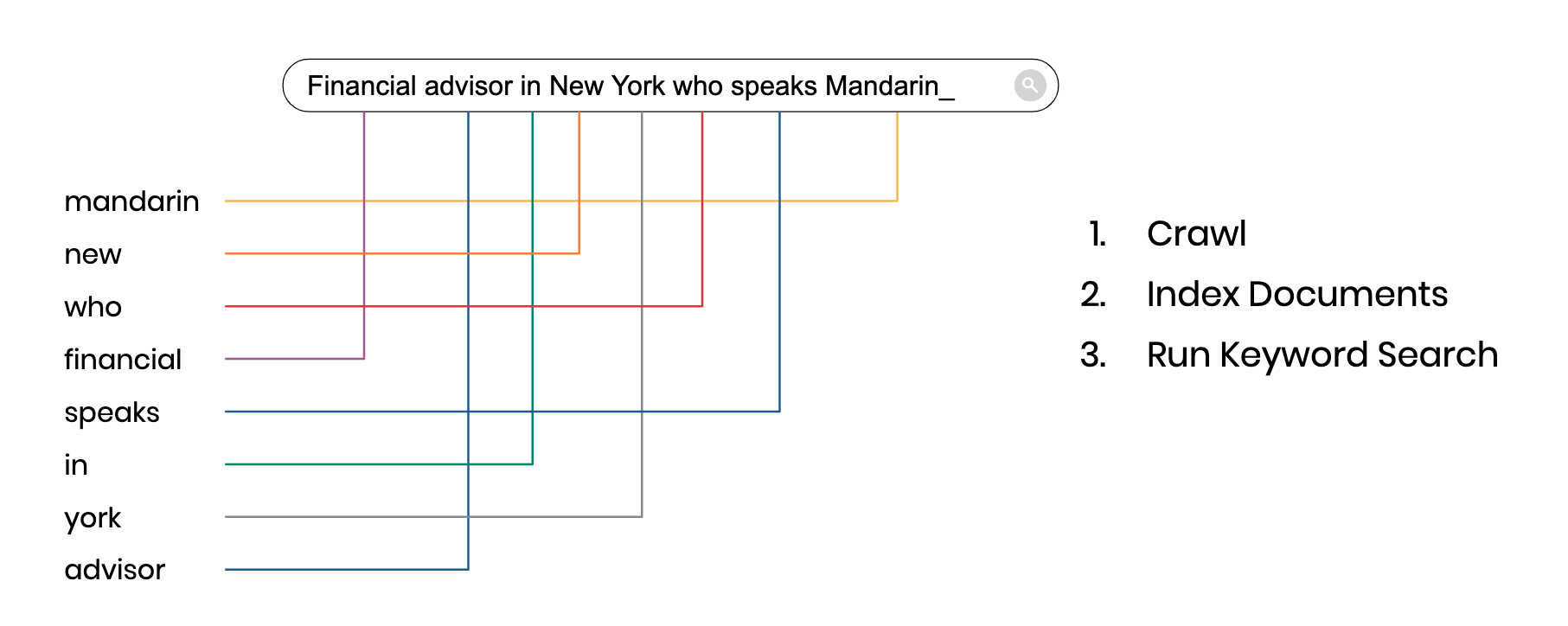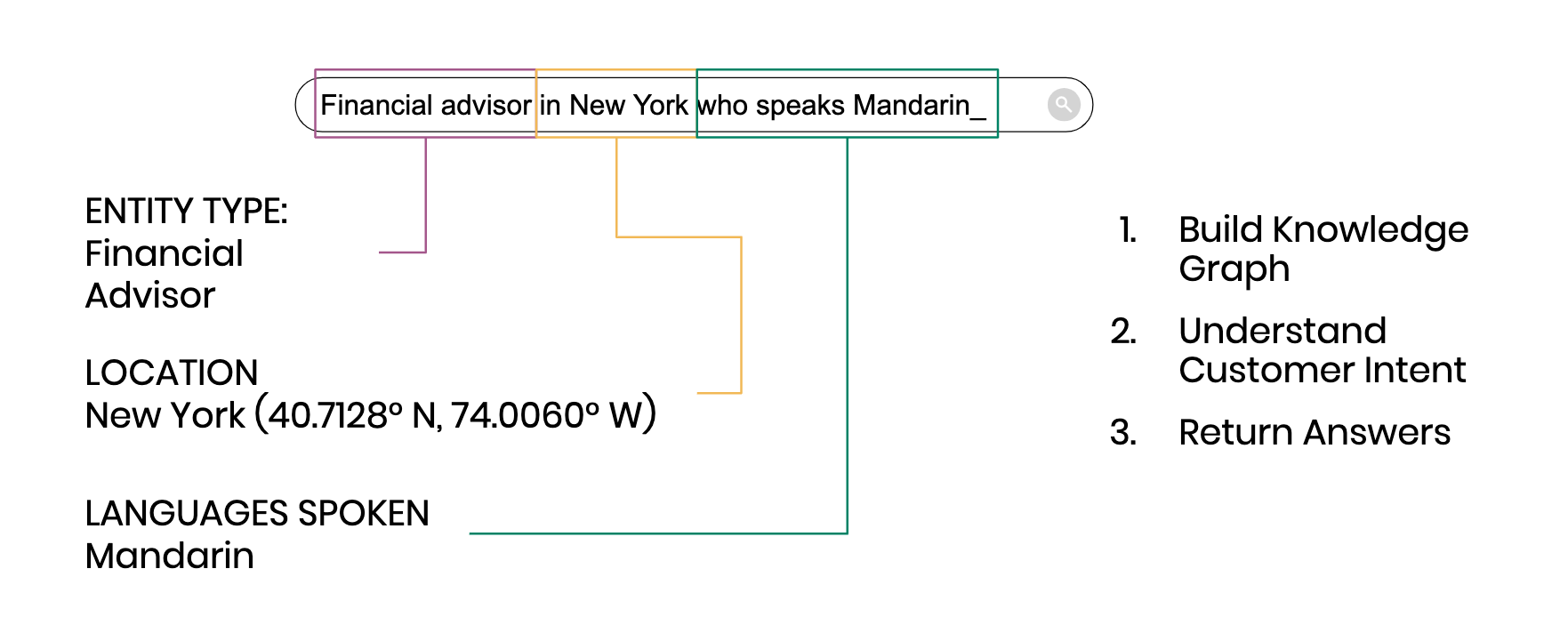Search Technologies | Yext Hitchhikers Platform
What You’ll Learn
In this section, you will learn:
- The main two ways to power search
- Why AI-powered search is more effective than keyword-based search
The Methods to Power Search
If a business wants to both drive engagement and glean unique insights, what are the search tools available to deliver a superior user experience?
Currently, there are two main ways that search is powered:
- Keyword-based Search
- AI-Powered Search
Keyword-based Search
The traditional method to power site search is keyword-based search.
Keyword-based search does not use a knowledge graph. Instead, it works by crawling every page on your website, indexing each word on the page in a document, and then running keyword searches against those documents. This is how Google worked 15 years ago, but it’s not how it works today. (Note: Remember indexing data is a technique used by both keyword and semantic search, as described in the Introduction to AI-Powered Search unit. This is different than indexing keywords as described above.)

Often search systems will use features like typo tolerance, synonyms, stemming, and other advanced features to make keyword search better, but it’s still simply keyword search.
Google switched to a knowledge graph because traditional keyword search just doesn’t produce the quality of results that users want. It doesn’t truly understand what users ask, and therefore can’t provide the answers they are looking for.
AI-Powered Search
AI-powered search is a search technology that understands the words of a query in context and produces results that are relevant to that context. It is built on a knowledge graph and uses natural language processing technologies. The knowledge graph’s structure helps the search engine to understand the entities, their attributes, and how they are related.

Your customers have been trained by modern search engines to simply ask a question and get a direct answer in return. Your search should operate in the same way. People type phrases and queries that have meaning, and the words have relationships to one another — conveying your user’s intent.
A search for a “dermatologist who speaks Spanish and takes Cigna” isn’t just a set of words, it’s a phrase that conveys specific parameters about your visitor’s desires. So when someone runs that search, they should see dermatologists — not just a list of pages on your site that use the words “speaks” and “takes.”
True or False: “Keyword-based search” and “Indexing data” are the same thing.
True or False: Keyword-based search does not include features like typo tolerance, synonyms, or stemming.
Which of the following describe AI-powered search? (Select all that apply)
You're a star! ⭐

